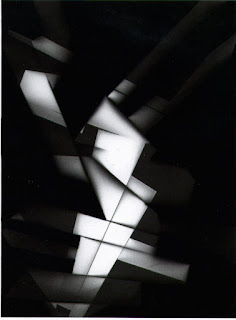Here are a few images from our trip:
Monday, September 26, 2022
Tuesday, September 13, 2022
sun-prints (lumen & cyanotype) and photogram
CYANOTYPE
LINK
 |
A photogram is a photographic image made without a camera by placing objects directly onto the surface of a light-sensitive material such as photographic paper and then exposing it to light. The usual result is a negative shadow image that shows variations in tone that depends upon the transparency of the objects used. Areas of the paper that have received no light appear white; those exposed through transparent or semi-transparent objects appear grey. The technique is sometimes called cameraless photography. It was used by artists Man Ray, Laszlo Moholy-Nagy, Christian Schad, Imogen Cunningham, and Pablo Picasso. |
Experimental Artist Profiles (Sun prints, lumen, chemigram, photogram, cyanotype)
Please check out these artists who applied the concept of painting with light. You may come up with a similar idea or differentiate the process.
Try to remember the artist names and their process, they will be in a midterm quiz.
 |
| Han Nguyen LINK |
 |
| Maria Estevez LINK |
 |
| John Fobes LINK |
 |
| Adam Fuss LINK |
 |
| Pierre Cordier LINK |
 |
| Garry Fabian Miller LINK |
 |
| Christine Nguyen LINK |
 |
| Cassie Doumas LINK |
 |
| Floris Neususs LINK |
 |
| Markus Amm LINK |
 |
| Laszlo Moholy-Nagy LINK |
Friday, September 9, 2022
Week 2: Finding your vision
Creating a Strong Fine Art Portfolio
Wednesday, September 7, 2022
Agenda for Friday Sept 9
This Friday:
- Please bring your previous work to the class (hardcopy portfolio, online portfolio, images stored in your google drive folder, images on flash-drive, etc.). I would like to see all of your previous work if it's possible.
- Purchase a notebook and start your idea for the artwork you are going to create in this class. Combine any of your other artistic skills beside photography.
- Revisit Week #1 lecture to understand what is "experimental photography".
- Work on your artist interview asap, don't wait. Talk to me if you get stuck.
- Form a collaboration with your classmates
- If you have images of the Ice House Long Beach, please share them with me and your classmates who couldn't make it. You should know where is your work going to display for the final.
Friday, September 2, 2022
Artist Interview - Due 9/30th
Please take this interview with your most in depth responses
1. Please introduce yourself?
2. How did you start making art/photography?
3. Professionally, what’s your goal of being an artist/photographer?
4. What inspires you?
5. What's the last art show that you saw?
6. What is your most important artist tool?
7. Is there an element of art you enjoy working with most? Why?
8. What are your best skills and abilities?
9. What do you see as the strengths of your artwork, visually, technically, or conceptually?
10. If you could have a group exhibition or collaboration with 3 other artists, who would they be and why?
For your references, please watch/read throughly these interviews with Sarah Sze and Pierre Huyghe
Sarah Sze -- You Mark Time Through Objects LINK
Pierre Huyghe -- A brush with Pierre Huyghe LINK

































